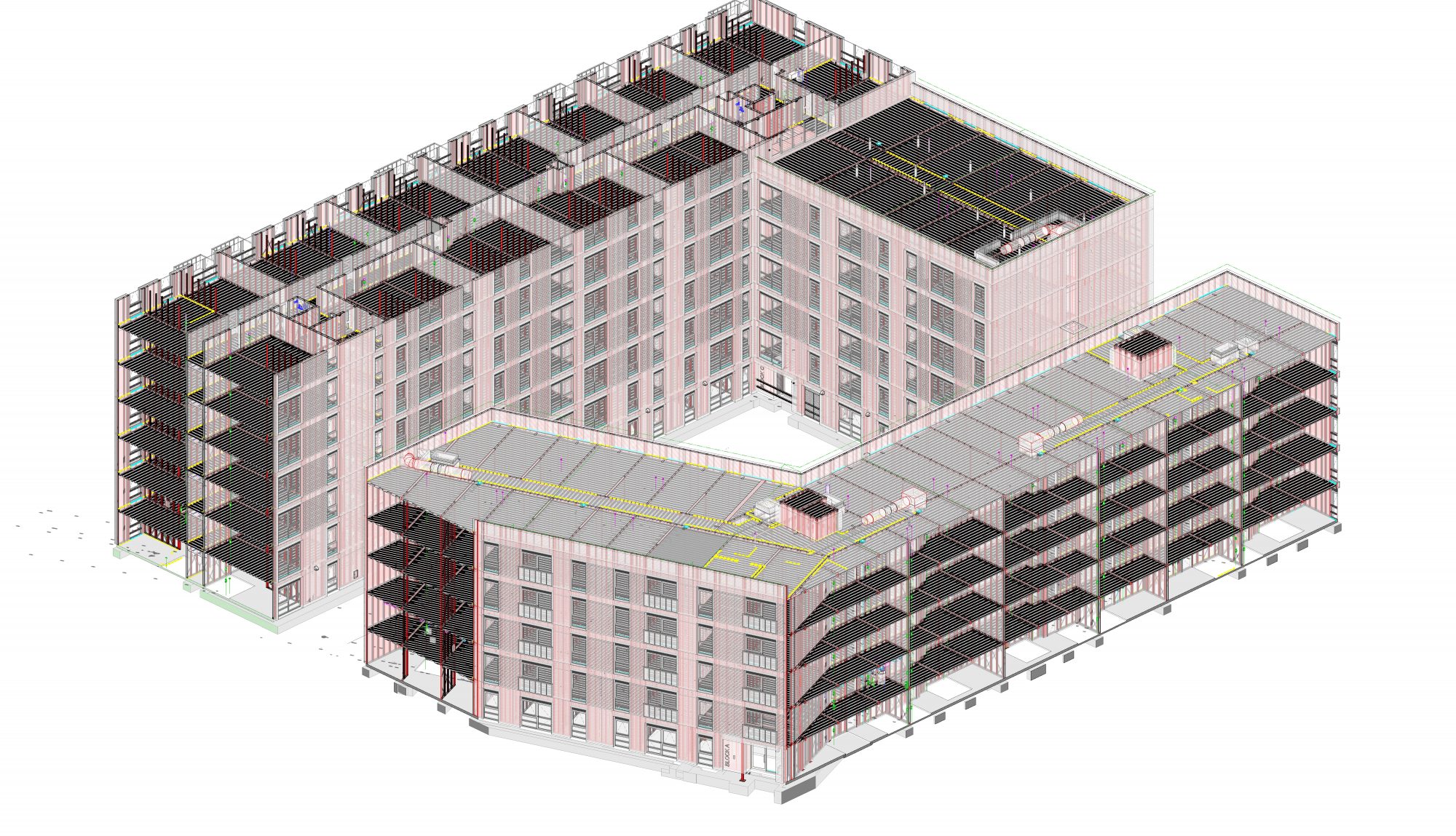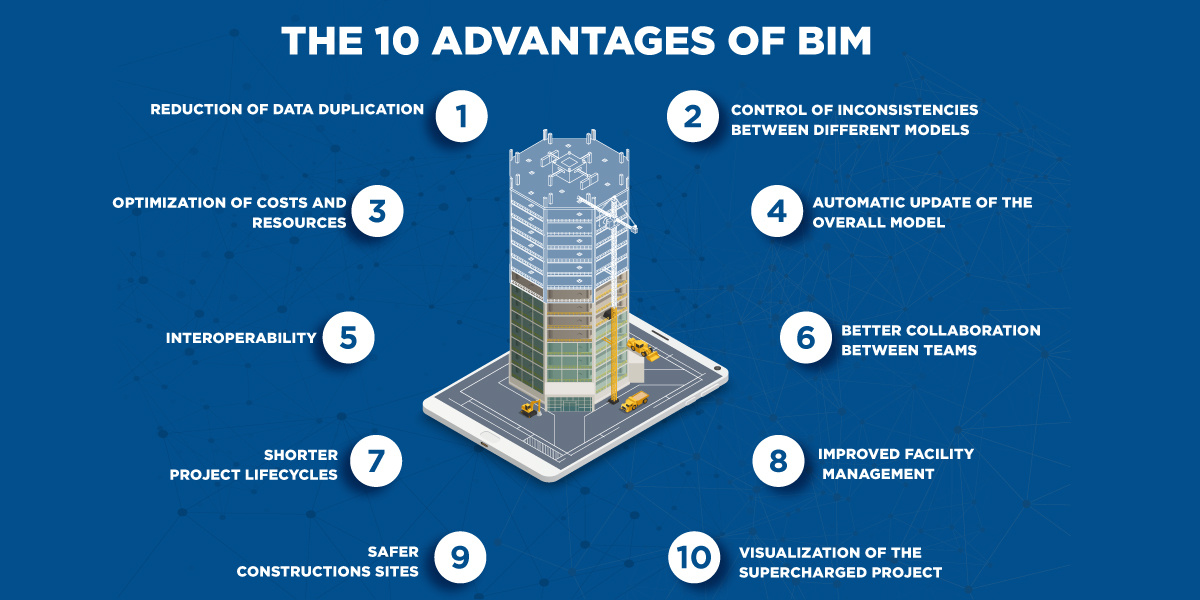Top In-Demand BIM Skills to Get a Job in MNCs 2025

Table of Contents
Building Information Modelling (BIM) is more than a way of work; it’s a revolution. Now if you think we are exaggerating, here are some numbers that will convince you.
- According to MarketsandMarkets, the BIM market is expected to be valued at $15 billion by 2028, growing at a CAGR of 13.7%.
- By the end of 2020, almost 70% of the professionals were using BIM as compared to just 13% in 2011.
- Almost 70% of civil engineers have adopted the global trend of BIM since 2016. Interestingly, you might be surprised to know that civil engineers originally developed it!
So, BIM is reshaping every aspect of the design and construction industry. But, what exactly is BIM? How and why is it reshaping the Architecture, Engineering, and Construction (AEC) Industry? Read on further to learn more about BIM.
Introduction to BIM
BIM is a process that involves the creation of a comprehensive 3D model encompassing complete information about a project’s design, materiality, structure, systems and maintenance. This intelligent iterative model serves as a collaborative platform for AEC professionals to work on a project concurrently. Revit, ArchiCAD, Rhino, Grasshopper, and Navisworks are some of the most relevant BIM software for architects and engineers used across the globe.
How is BIM Reshaping the AEC Industry?
BIM is a catalyst of change for the AEC industry, ushering in a new era of design, construction, and management. Mentioned below are the benefits of BIM for the design and construction projects and AEC professionals:
Benefits of BIM for Design and Construction Projects
BIM adoption on an international scale has become a hallmark of cutting-edge AEC practices. Below are a few reasons how BIM is benefitting design and construction projects on a global level:
1. Global Collaboration
BIM provides a standardised platform that facilitates local and global collaboration for project information. Design changes, updates, and feedback can be communicated in real-time, breaking down geographical barriers and enabling efficient teamwork.
2. Clash Detection
One of BIM's significant advantages is its ability to detect clashes and conflicts in the design phase. This proactive approach helps identify potential issues before construction begins, reducing risks and preventing costly rework.
3. Project Lifecycle Management
BIM’s impact extends beyond construction as it supports the entire project lifecycle. From design and construction to operation and maintenance, the digital model serves as a comprehensive repository of information.
4. Sustainable Design
BIM is crucial in analysing and optimising design as per sustainable practices. This feature aligns with the industry's growing focus on environmentally conscious practices. Additionally, many MNCs are now adopting BIM to design and construct sustainable infrastructure projects.
5. Project Management
BIM's scope extends to cost estimation, project scheduling, and facility management. The data within the BIM model enables accurate cost forecasting and resource allocation, aiding in budget management throughout a project.
Benefits of BIM for AEC Professionals
BIM's widespread adoption has created a demand for BIM-skilled professionals who can navigate and maximise the potential of this technology. Individuals equipped with BIM expertise find themselves in a prime position to explore opportunities with MNCs such as AECOM, Atkins, and Jacobs. Take a closer look below at how BIM is benefitting AEC professionals:
1. Skill in High Demand
As MNCs seek to streamline their operations and enhance collaboration, BIM proficiency becomes a highly sought-after skill. Individuals with expertise in BIM software such as Autodesk Revit, ArchiCAD, or Navisworks are in high demand.
2. Cross-cultural Collaboration
MNCs engaged in international projects often value professionals who can effectively collaborate in a multicultural environment. BIM proficiency not only demonstrates technical skills but also showcases an individual's ability to work seamlessly in diverse teams.
3. Competitive Edge
In a competitive job market, having BIM skills can be a differentiator. MNCs recognise the value of professionals who can contribute to efficient project delivery.
Why do MNCs Need BIM-proficient Professionals?
BIM today has emerged as a transformative force in the architecture and construction industry.
Multinational Corporations (MNCs) are increasingly hiring BIM-skilled professionals who can optimise their operations, enhance project efficiency, and stay ahead of the competition. So, without adequate knowledge of BIM software and workflows, architects and other construction professionals will find it incredibly hard to secure a position at any MNC. Here is an in-depth exploration of the key skills that can set architects apart in the global job market.
1. Technical Skills
Knowing computational tools and processes is fundamental to becoming a BIM professional. Global companies seek candidates who can use BIM to collaborate with remote teams and create iconic structures seamlessly. See below the skills you need to achieve that:
-
Advanced 3D Modelling
MNCs require professionals to have a deep understanding of generative design and parametric design to create intelligent, adaptable models. This enables them to create unique projects that set new standards of innovation globally.
-
Scripting Languages
Proficiency in scripting languages like Python empowers professionals to automate repetitive tasks and customise BIM workflows. This enables MNCs to streamline workflows and efficiently implement their ideas to perfection.
-
Expertise in BIM Software
Professionals must have a solid command of BIM software such as Autodesk Revit, Navisworks, ArchiCAD, and Tekla Structures. MNCs hire candidates who understand how to best use software at every stage of work from design to execution.
2. Advanced BIM Skills
Working with BIM is not only about making 3D models but also understanding how to interpret and modify them. For this purpose, architects and engineers must hone their skills in advanced BIM dimensions and tools as mentioned below:
-
Clash Detection and Resolution
Understanding how to identify and resolve clashes within a BIM model is a critical skill. Candidates seeking jobs at MNCs should be adept at using clash detection tools to identify conflicts between different building elements.
-
Resource Allocation and Project Scheduling
The BIM usage in the AEC industry goes beyond static 3D models and delves into time-based sequencing and project estimation. This advanced skillset enables professionals to create dynamic models that visualise project progress over time.
-
6D and 7D BIM
AEC professionals interested in MNC jobs should familiarise themselves with facility management and sustainability analysis. This adds a layer of environmental consciousness to the design process, aligning with global trends towards sustainable architecture.
3. Soft Skills
Alongside technical skills, architects must also possess interpersonal skills to successfully land a job in MNCs. Below are the key soft skills that people must have for getting a BIM role in top-tier firms:
-
Communication
Clear and effective communication is paramount when working in MNCs. Therefore, professionals should hone their ability to convey complex ideas and concepts to diverse stakeholders, ensuring everyone involved understands the project goals and requirements.
-
Collaboration and Adaptability
Given the multicultural nature of MNCs, architects and engineers need strong collaboration skills to work seamlessly with teams spread across different locations. Adaptability is also crucial, allowing professionals to navigate diverse work environments and respond effectively to changing project dynamics.
-
Problem-Solving
The ability to analyse challenges and propose innovative solutions is a key soft skill for MNCs. Professionals should be adept at troubleshooting issues that may arise during the BIM process, contributing to smoother project workflows.
Why is Now the Right Time for Architects to Upskill in BIM?
BIM is gaining rapid acceptance across various countries for small-scale as well as large-scale projects. Governments, MNCs, and clients are increasingly prioritising BIM adoption to realise their projects more effectively. Architects who upskill in BIM will position themselves at the forefront of this transformative wave, gaining a competitive edge in the job market. This will also help professionals to ask for better pay packages. On average, architects who are well-versed in BIM can earn an average of 1.5 times more than their peers.
Is BIM a Deal Maker for MNC Jobs?
If you are still wondering if learning BIM would be worth it, below are some numbers that can help you make a decision.
- The graph above depicts the mass acceptance of BIM in various countries across multiple project stages. This implies that the use of BIM is advancing in all aspects of work for the AEC industry.
- A 2022 survey conducted by the American Institute of Architects (AIA) indicates that 90% of interviewed firms incorporate BIM into their workflows, primarily for design or visualisation purposes.
In Conclusion
BIM is shaping the future of building design and construction, so the time to upskill in this technology is NOW. By investing in relevant BIM courses, you will be able to establish yourself as a distinguished professional in the industry making yourself more suitable for BIM jobs in MNCs.
So, if you are now thinking of enrolling for BIM programs, we recommend you check out the BIM Professional Course for Architects and BIM Professional Course for Civil Engineers by Novatr. It is a one-of-its-kind course, tailored to suit the needs of modern AEC professionals. Through the course, you will learn various BIM software, tools, workflow, and processes that will help you become an expert in the industry. Moreover, Novatr provides placement assistance ensuring that BIM learners bag the most amazing work opportunities across leading MNCs.
Visit our Resources page to stay updated on all AEC industry-relevant information.

 Thanks for connecting!
Thanks for connecting!


.png)


.jpg)


.jpeg)

